17th of January: time for fiesta
Though Vilanova i la Geltrù is quite famous for its traditional Carnival, which I hope I will be able to see in a month or so, there is another fiesta which is even more distinctive and characteristic. Indeed, as a woman proudly explained to me this morning, "Tres Tombs es algo que se puede encontrar sòlo aquì, en Tarragona o Barcelona no hay nada parecido" (Tres Tombs is something you can find only here, in Taragona or Barcelona you do not find something similar). Indeed, the series of initiative which take place in Vilanova i La Geltrù to celebrate Sant Antoni Abat, the saint patron of the city, is really unique in its kind.
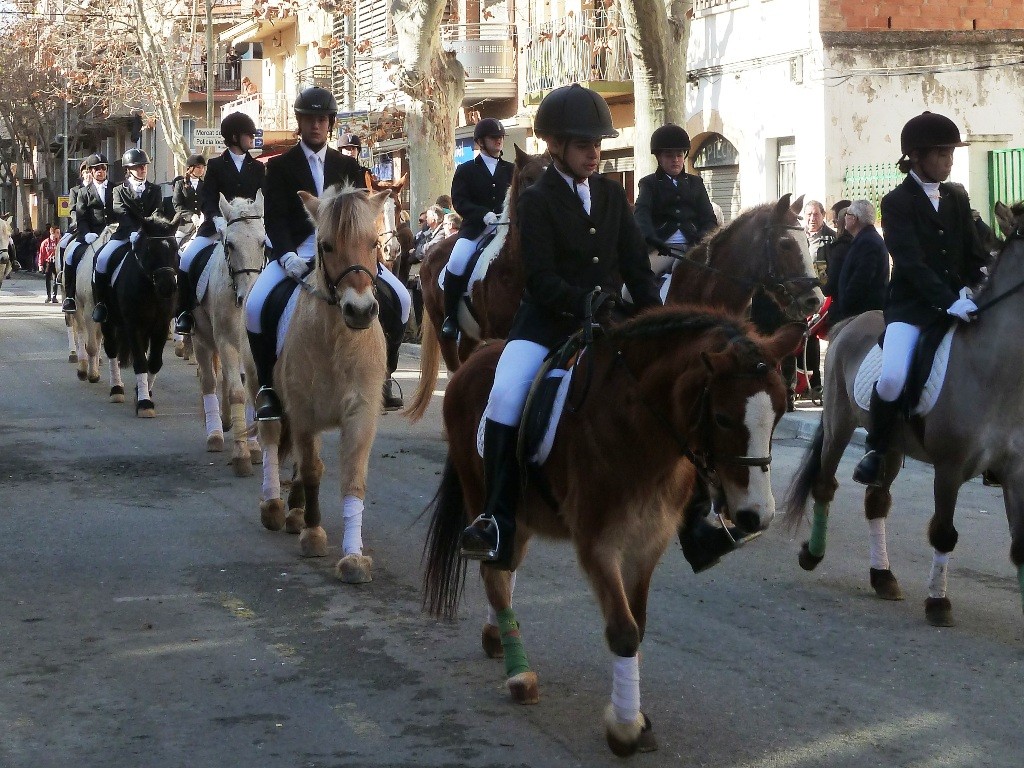
The core of the celebration is, of course, on the 17th of January, the day of Sant Antoni Abat, consisting in a spectacular parade for the streets and city centre of Vilanova and involving horses and horse-riders, carts and carriages. Saint Anthony is the protector of the domestic animals: not by chance, therefore, the reverence towards him is of special relevance in the rural areas, where he used to be invoked in order to protect the animals of the farmhouses. A long-lasting tradition, which has been partly preserved in the contemporary world. Indeed, if on the one hand it is now probably rare to see people bring their pets (cats, dogs, even rabbits) to church for the parishes to bless, like they used to do, it is still possible to find signs of the ancient custom in traditional rituals like Tres Tombs.
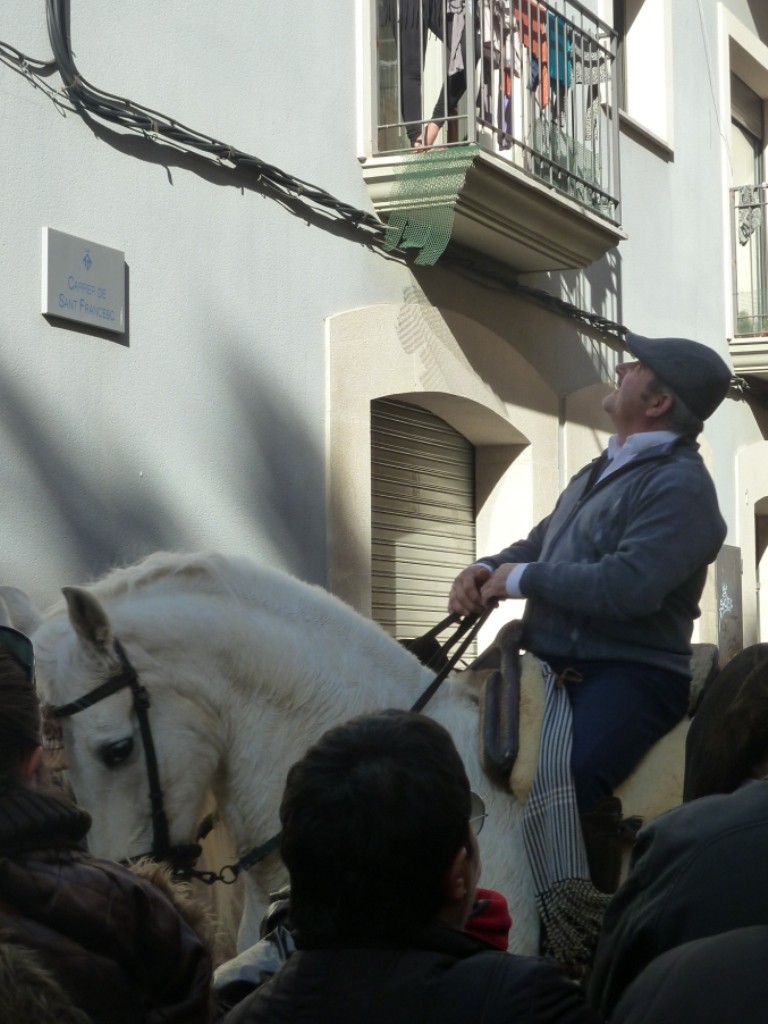
Quite curious about the celebration, the core of which was due towards noon, I left home in late morning and lazily headed for the city centre. As I came approached the Rambla Principal, the number of people in the street grew considerably and finally began a crowd in front of the church of Sant Antoni Abat. It looked like if the whole town had gathered there: elderly people holding by hand their young nephews, ladies with their toddlers in the strollers, children holding the thread of their colourful balloons tight in their fist. In addition to this, a new and characteristic ornament, probably prepared in the nursery schools right for the occasion: paper puppets representing horses, a preview of the real animals who were about to arrive.

However, the first encounter with the Tres Tombs tradition was not exactly successful: the human wall crowding the narrow streets of the city centre prevented me from catching sight of the parade. Fortunately enough, it had not been the only opportunity to see spectacle, as the parade was supposed to go round the itinerary three times (which is more or less the meaning of the name Tres Tombs). Hardly discouraged by this sour foretaste, therefore, I moved to one of the ample avenue leading to the beginning of the Rambla.
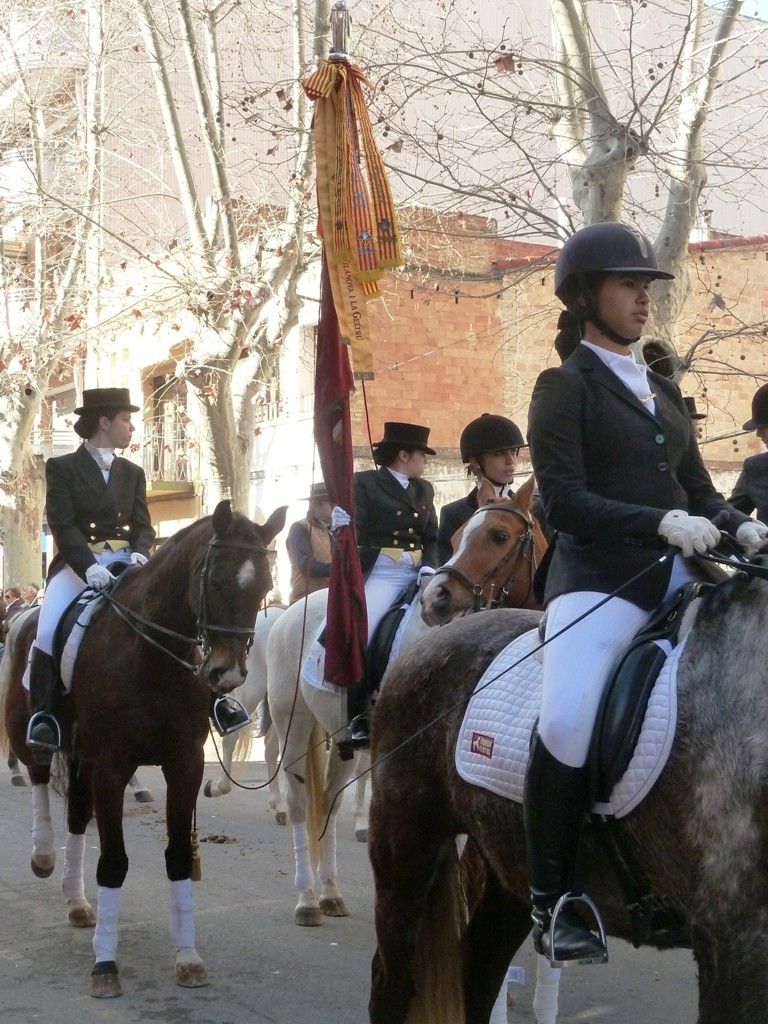
After a few minutes of patient wait, then, the arrival of the marching band announced the beginning of the parade. And after all, it was really worth. The notes of the melody, indeed, introduced a spectacular series of horse-riders of all ages, including children mounting under the watchful eyes of their parents. Elegantly dressed in their glossy uniforms, the improvised jockey gracefully went by, waving from time to time to the people crowding the sides of the road. Then it was the turn of the carriages, which apparently brought the city back to the 19th century: indeed, a real procession of stagecoaches followed, carrying passengers wearing the typical outfit of the ancient aristocracy.
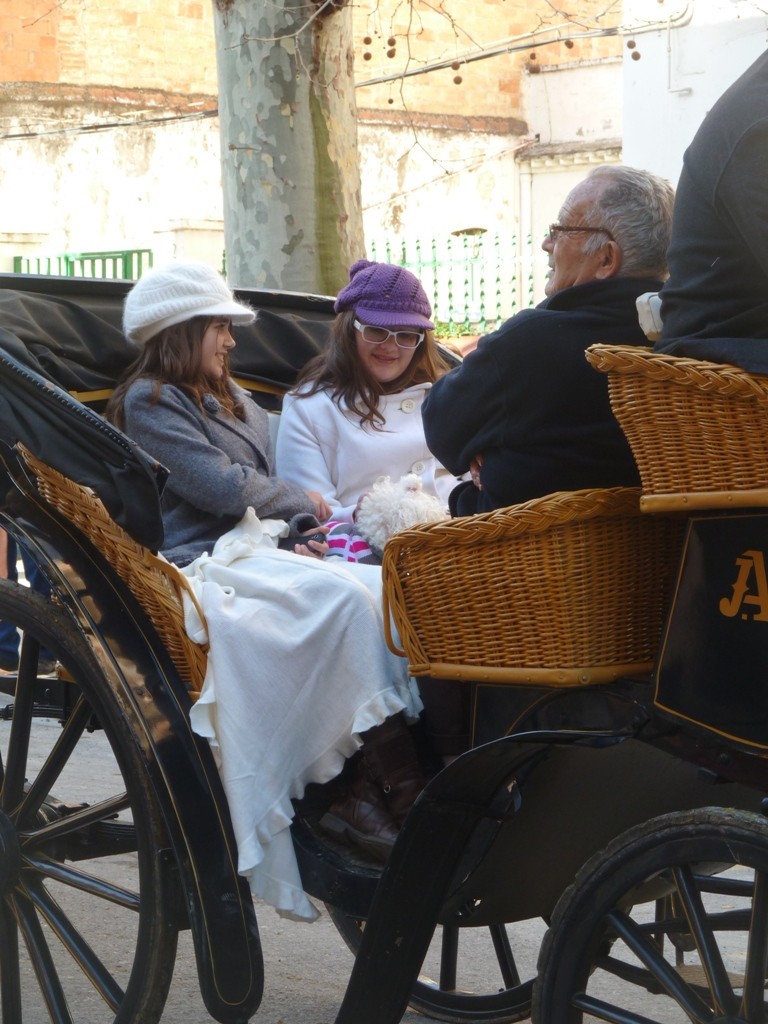
Once again, though, it was the human component which made the celebration really heartwarming. The way I see it, indeed, the most memorable sight was a carriage which stopped right in front of me, leaving me time to appreciate the excitement of two young siblings sitting in the coach, to the delight of their grandfather who dearly embraced them. Finally, the carriages were replaced by a string of carts, whose shipments included all the range of farming products of the region: milk, olives, straw, vegetables of all kind were carried along the streets of Vilanova i la Geltrù in this memorable sunny morning.
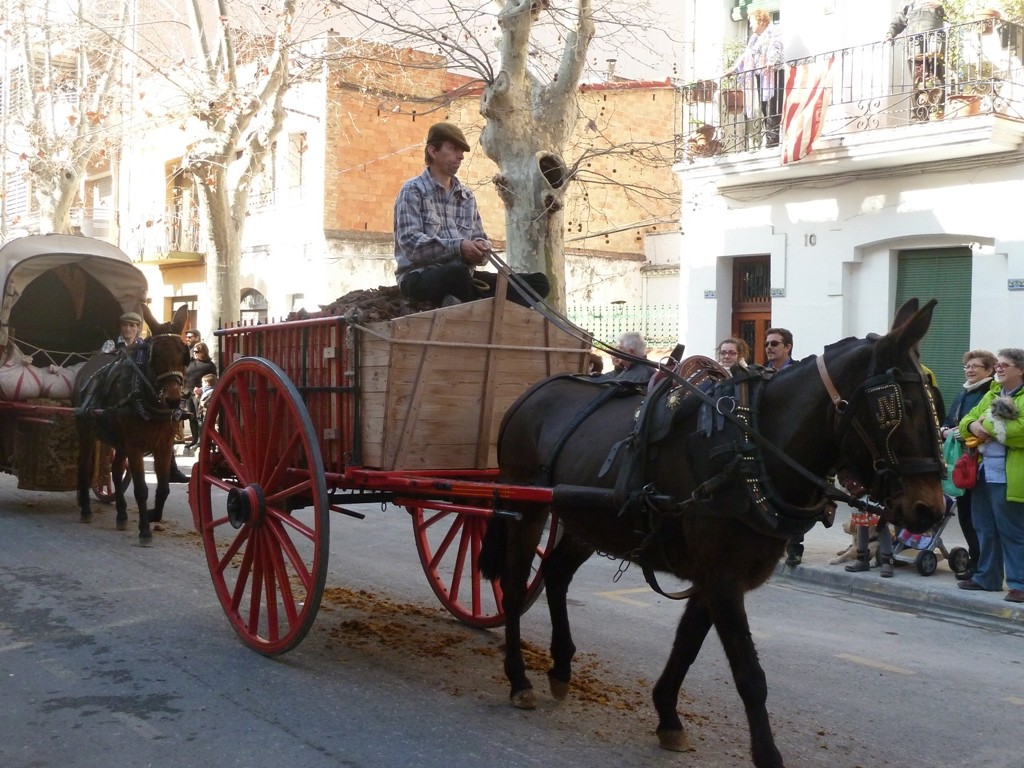
Under the alert eye of Sant Antoni, who also took part in the parade in the form of a statue, the parade then ended in the same point from which it had started (the church of Sant Antoni, where horse and horse-riders had been previously blessed). While most of the people focused on the election of the finest horse-riders and of the most original carriage of the day, I made my way towards a well deserved lunch. On my way back, though, I had to watch my steps with more attention than usual, as the several passages of the horses had obviously left their marks along the streets of the city centre. The memorable photographs from the day, though, abundantly made up for it.
Photo gallery
Want to have your own Erasmus blog?
If you are experiencing living abroad, you're an avid traveller or want to promote the city where you live... create your own blog and share your adventures!
I want to create my Erasmus blog! →





















Comments (0 comments)